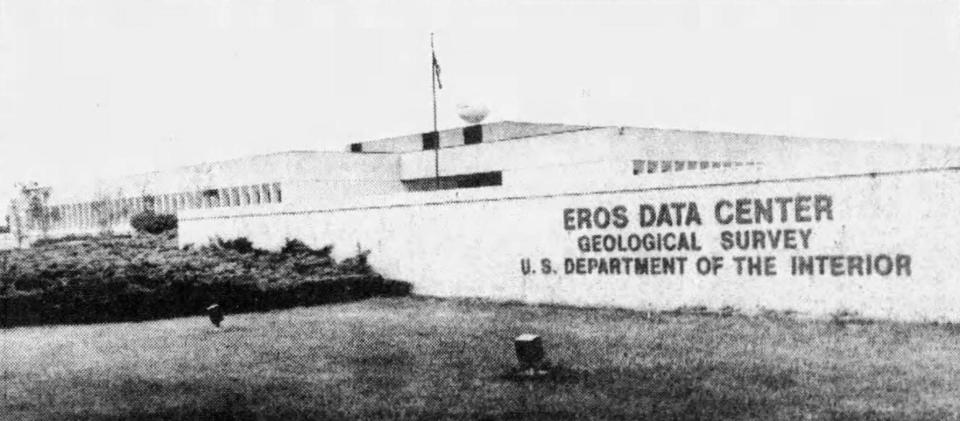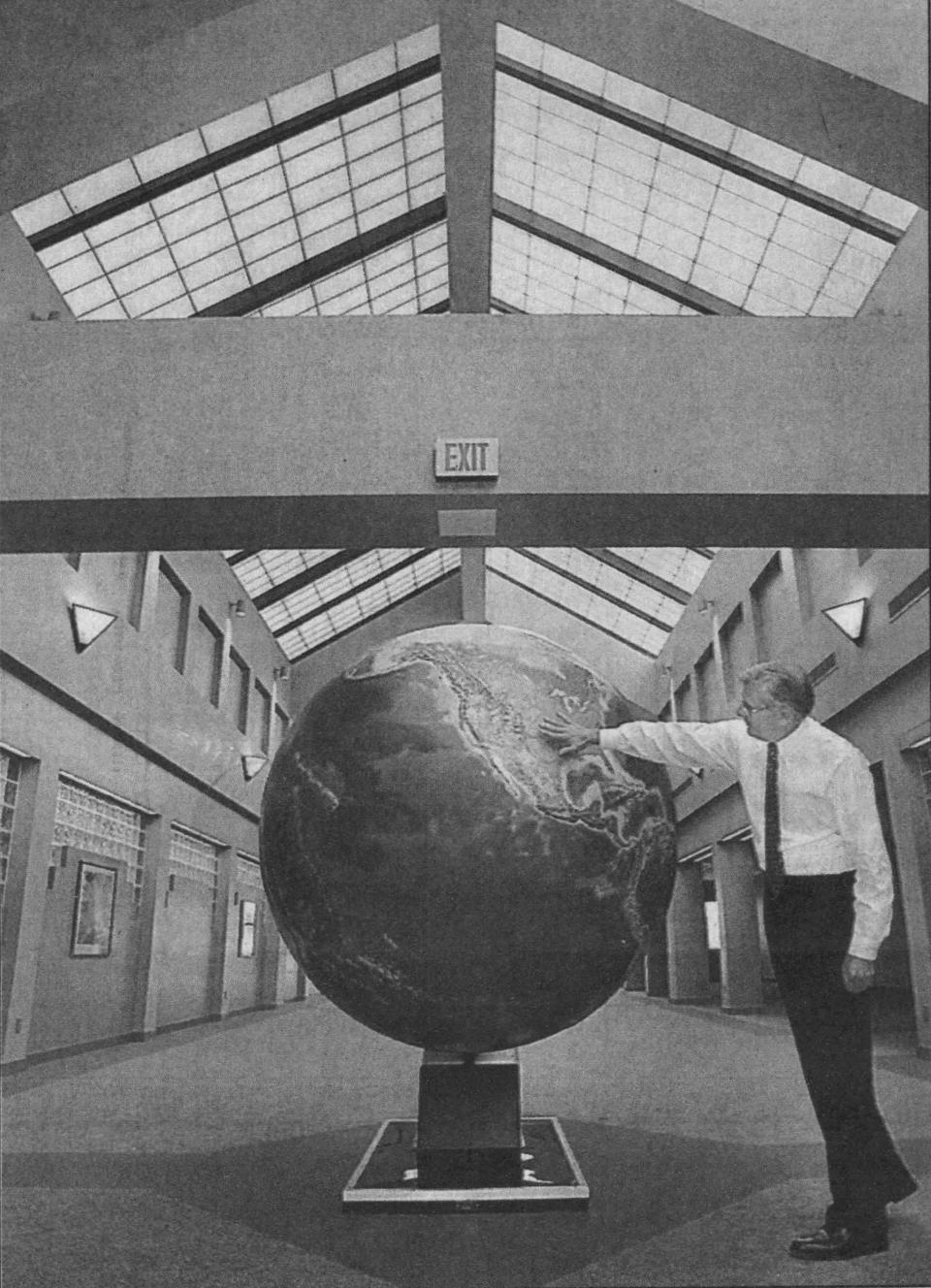How Sioux Falls launched South Dakota into the Space Age: Looking Back
- Oops!Something went wrong.Please try again later.
In the mid 1960s, Sioux Falls entered the Atomic Age when NSP built its Pathfinder Nuclear Generating Station northeast of town.
For a short time, the area had the atomic feather in its cap, and the chamber of commerce wasn’t shy about sharing that fact. A short time later, when South Dakota Sen. Karl Mundt, and local leaders like Al Schock, saw an opportunity for the state to enter the Space Age, they did not hesitate to make it so. The EROS Data Center was the fruit of this effort.
On Sept. 20, 1966, Secretary of the Interior Stewart L. Udall announced Project EROS. EROS is an acronym for Earth Resources Observation Satellites. Using dedicated satellites, EROS would be able to collect data about this big blue marble we call home. This research would revolutionize our understanding of our planet, natural resources, and weather.
Once launched, EROS satellites would need a staff to collect, store, and analyze the data received. It was determined that a location in the central United States would enable the data collected by the satellites to be more easily received. This data center would need to have a modern airport nearby and have an unobstructed view of the sky. Mundt, at the time a member of the Senate Appropriations Committee, saw an opportunity for his state, and didn’t hesitate to tout the Sioux Falls area as a perfect location. The city had Joe Foss Field, a well-established airport, capable of receiving jet aircraft. The area also had a pretty clear view of the sky.

By 1967, design had begun on ERTS-A, the first Earth Resources Technology Satellite. In 1970, General Electric’s space division in Valley Forge, Pennsylvania began construction. This satellite would later be renamed Landsat-1, or LS1.
In March of 1970, the Sioux Falls area was chosen as the general location for the EROS Data Center. Six sites in the area were under consideration. Two were near Parker, one was near Dell Rapids, and the remainder were situated near Garretson. After careful analysis and surveying of the sites, a spot six miles west of Garretson and 12 miles north of Sioux Falls was chosen. Up to that point, the Rudy Froseth farm had occupied a quarter of the location, while Alfred Hegge owned the other quarter.
More: How the New Theatre set the stage for Sioux Falls for years to come: Looking back
On Jan. 2, 1972, EROS personnel moved into temporary offices at 132 S. Dakota Avenue. Offices were needed in the area to oversee the development of the data center. The groundbreaking ceremony for the building was on April 14, 1972. The ground was broken in an unconventional, but apropos way – with a walking plow pulled by mules named Jenny and Maude. Officials took turns guiding the plow. These included Gov. Richard Kneip, North Dakota Sen. Milton Young, Undersecretary of the Interior William Pecora, and others.

ERTS-A was put into orbit on July 23, 1972. Upon achieving orbit, it circled the globe once every 103 minutes, 14 orbits per day. It was equipped with two camera systems, the Return Beam Vidicon, and a Multispectral Scanner. The latter ended up providing superior imaging – and though it had been added as an experiment, it went on to become the primary camera. The data from ERTS-A was analyzed at the interim facility on Dakota Avenue until the EROS Data Center was completed in 1973.
On Nov. 10, 1972, following congressional approval, President Richard Nixon declared the building to house EROS the Karl E. Mundt Federal Building. The building was dedicated the following August, and staff from the interim office began moving in. On hand for the dedication were EROS officials and Secretary of the Interior Rogers Morton. The space age had finally fully arrived in the Sioux Falls area.
This era —the late 1960s and early 1970s — was a time of great optimism for young people with their eyes focused on the skies. The first episode of Star Trek aired in the United States just 12 days before Secretary Udall’s announcement of the EROS program. It began to seem as though casual space flight for most citizens might actually be on the horizon. It may yet happen. EROS was a big step into a wider world in which we could gather images of our planet and discover how to better care for it.
Over the years, EROS has continued to grow and analyze more information from more and more improved satellites. In September, EROS will celebrate 50 years. Here’s hoping that, over the next 50 years, EROS will continue its mission to contribute to the understanding of a changing Earth.
Correction: A previous version of this story incorrectly stated who owned land chosen for the EROS site. The story has been updated to reflect this change.
This article originally appeared on Sioux Falls Argus Leader: How Sioux Falls launched South Dakota into the Space Age: Looking Back

